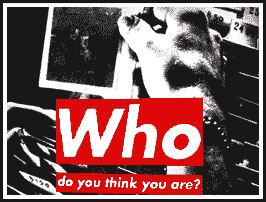The Art of Reviewing
John Haberin New York City
Peter Schjeldahl, Roberta Smith, and Criticism
These have been tough times for art criticism. Just this spring and just here in New York, Roberta Smith announced her retirement from The New York Times. Not two years before, in October 2022, Peter Schjeldahl died of lung cancer at age eighty.
The double blow means so much more coming from such prominent and reliable writers at essential publications. Smith has been co-chief critic at The Times since 2011, where she has built a top-level roster, but no one cuts to the quick like her. Schjeldahl began writing for The New Yorker in 1998.  Each had come to the right place. How many other newspapers have taken daily or weekly criticism as an imperative, and what other magazine would give a critic a two-page spread as often as he liked? The loss of their most influential voices should have anyone asking what else has changed.
Each had come to the right place. How many other newspapers have taken daily or weekly criticism as an imperative, and what other magazine would give a critic a two-page spread as often as he liked? The loss of their most influential voices should have anyone asking what else has changed.
They have left behind a changing critical landscape—one that they could never have foreseen or intended. It values artists more than their art, as seeming friends and real celebrities. It covers the business of art, without challenging art as a business. It cares more about rankings than seeing. It gives all the more reason to look back and to take stock. Good critics, when you can still find them, are looking better and better.
The center of things
Peter Schjeldahl could see his death coming—clearly enough that he announced it himself, in place of a review, as "The Art of Dying." It shows his insistence on speaking from his perspective while demanding something more, about art and language, just as in his criticism. He had been a poet, fans like to point out, and he must have seen the same imperative in poetry as well, just as for William Wordsworth reaching for first principles on long walks across north England's Lake District. Schjeldahl quickly took back his finality, perhaps overwhelmed by letters of sympathy and offers to replace him. Death was not so easily dissuaded.
He was a stylist, but not to call attention to himself. He was not one to wallow in the first person at the expense of art. Rather, his point of view helped him engage the reader and to share his insights. One essay described his "struggles" with Paul Cézanne, which must sound like sacrilege in light of the artist's place in the canon. And then one remembers that Cézanne painted not just landscape, portraits, and still life, but his struggle with painting itself—what Maurice Merleau-Ponty called "Cézanne's Doubt." Schjeldahl, too, had his doubts, and they led him to unforeseen conclusions.
He was most at home with someone like Cézanne, at the birth of modern art. Still, his interests ranged from Jan van Eyck, in a memorable article on restoration of The Ghent Altarpiece, to art in the galleries. Roberta Smith, in turn, was mostly content to leave art history to her fellow chief critic, Holland Cotter. I shall always remember her instead as literally climbing over contemporary art, in a photo together with Kim Levin from their days at the Village Voice. It gets me going each year through my own self-guided tours of summer sculpture in New York's great outdoors. Smith, though, never does get personal, and she is not just out for a good time.
She had a way of landing at the center of things, going back to jobs at Paula Cooper, the first gallery in Soho, and The Times, where she had freelanced before coming on staff in 1991. She promises to keep going to galleries, too, "just to look." Yet she has a way of expressing her doubts, serious doubts, about what she praises and what she seeks out. All that "on the other hand" can make her a less graceful writer, but it keeps her open-minded and critical. It is particularly welcome at a publication eager to suppress doubts in favor of hit counts. But I return to trends at The Times and elsewhere in a moment.
This could be a time not to mourn or to bury writers, but to celebrate. There have been worse in the past, and there will be strong voices in the future. Those old enough to remember Hilton Kramer at The Times will still cringe at his dismissal of postwar American art. His colleague, Grace Glueck, dutifully soldiered on despite obstacles to women. (John Russell brought a welcome change, and I still consult his survey text in The Meanings of Modern Art.) Besides, no critic can make or break a publication.
Smith had already brought on Jason Farago, who revives an old approach to art history going back to John Canady in the 1960s, walking a reader through a painting one detail at a time. It works well with interactive Web pages in the present. Cotter remains as well, at least for now, free to focus on what matters most to him—diversity in artists, especially gays and Latin Americans. With its typical care, The New Yorker took more than a year to name Jackson Arn as successor to Schjeldahl, and it did well, it seemed, although he has since been let go for "inappropriate" behavior at a party celebrating the magazine's centennial. Arn teems with insights, I found earlier, enough to have me wondering what is left for me to say, and, like Schjeldahl, he is not above telling one-liners. And yet something else, too, has changed that could defeat them all.
Just to look
"I think if I have any legacy," Smith said in a kind of exit interview, "it's teaching people how to look at art." Now if only The Times agreed. Even before her departure, it began to cut its art reviews almost to nothing. (While changes at The New Yorker are more modest and far less toxic,  it has reduced its capsule reviews across the arts as well.) It still covers museum exhibitions, if often belatedly. That leaves a huge monthly compendium of "what to see in the galleries."
it has reduced its capsule reviews across the arts as well.) It still covers museum exhibitions, if often belatedly. That leaves a huge monthly compendium of "what to see in the galleries."
It has room for anything but teaching. This is not about expanding minds, but planning your weekend, just as the food section tells you what to cook "this minute"—morning, noon and night. It is about letting you know that you are in the know. It is no coincidence that any remaining longer review is now a "critic's pick," and the critics write accordingly. They hardly have time for the art of looking, even if they cared to try, and make up for it with superlatives. I hesitate to call it criticism.
I have left out a still more visible change, as reviews give way to feature articles with the emphasis on the artist. They purport to take you behind the scenes, because real people sell papers. They go far to turn the arts pages into a second style section, with role models and rankings, just as opinion articles more and more take on lifestyle changes, and news articles stress the human angle as well, beginning with anecdotes and ending with catchy quotes.
I started this Web site, then the only Web site devoted to contemporary art and art history, nearly thirty years ago to get away from superlatives, with reviews that tell stories about how to look. I was put off by magazines, with their word counts and the need to pitch articles before I could see the show. I hoped to integrate values, theories, and description into something worth reading. (I have explained what I had in mind here and here.) I could not begin to rival those I admire as much as Smith, Schjeldahl, and many others, but I like to think that they would balk at puff pieces, too. Critics have better things to do than huffing and puffing.
Does any of this matter? After all, mainstream media exist to bring news and features to the general public, and there are others worth heeding. Yet art magazines are changing in much the same way, and magazines everywhere are dying, along with alternative weeklies like the Voice (once a home for Schjeldahl and Smith's husband, Jerry Saltz, as well). Art in America is now hard to tell from ArtNews, which merged with it in 2015, and the latest cover leads with rankings, for "five trailblazing artists." Artforum is no longer the house organ for Minimalism of its founding in 1962, which is only right. Yet its Web site, too, leads with "news"—and a "spotlight on select summer advertisers."
Why, though, does it matter except to curmudgeons young and old like me? I shall not repeat my notion of good criticism, but I still believe it, and I still value those, online and off, who get readers looking and thinking—and, sure, than includes our paper of record and my favorite magazine. Galleries, under enormous financial pressure since the pandemic, need lookers and thinkers more than ever as well. But the new model for journalism caters to the art business in a way that shapes art as well. Shallow writing encourages the dominance of shallow artists, and clickbait translates into attention getting. Maybe Smith knew that it was time to retire.

"The Art of Dying" ran on December 16, 2019, and lends its name to one last book of Peter Schjeldahl's criticism. The farewell interview with Roberta Smith ran on April 11, 2024.




